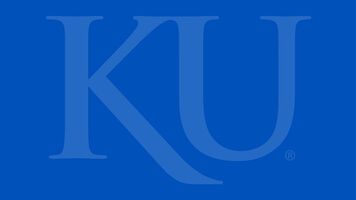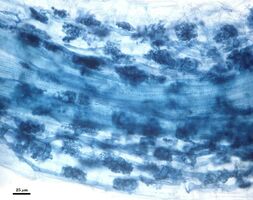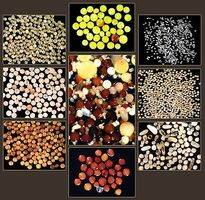

About Us
Arbuscular mycorrhizal fungi are a group of soil-borne fungi found in almost any habitat worldwide. These fungi partner with many plant species by colonizing roots and producing hyphae in the rhizosphere. The relationship between AMF and plants is generally a mutually beneficial symbiosis, these benefits can be physiological, nutritional, ecological or any combination of these processes. These fungi also support many ecosystem services including increased soil stability.
INVAM is the largest AM fungal culture collection available to the public, started in 1985.
Our Mission Statement:
“To acquire, propagate, characterize, and maintain germplasm of arbuscular mycorrhizal fungi in living cultures for preservation and distribution to any person or institution.”
Delivery & Returns
Please email us at invam@ku.edu with questions about delivery and returns.
Payment Info
We accept all major credit cards
Your personal details are secure and payment processing is safe and reliable.
If your institution requires special documentation please email us at invam@ku.edu
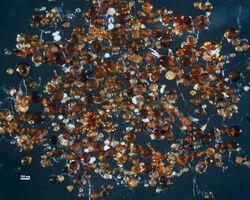
Explore Our Catalog
Contact Us
Higuchi Hall
2101 Constant Ave
Lawrence, KS 66047
Get directionsOpen hours
Daily 8:00 AM — 5:00 PM
Contact info
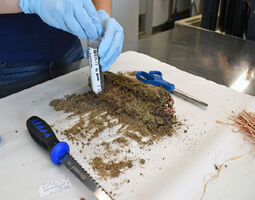
This collection was the brainchild of Dr. Norman Schenck. A professor of plant pathology at the University of Florida and a long-time mycorrhizologist, Dr. Schenck had a vision to create a living culture collection to preserve valuable germplasm and make this germplasm available to researchers and the public. In 1985, he received funding from the National Science Foundation (NSF) and created the International Culture Collection of VA Mycorrhizal Fungi (INVAM). He served as curator of the collection for five years until his retirement in 1990.
Upon Dr. Schenck’s retirement, there were 182 stocks in the collection, and they were moved to West Virginia University and merged with a local collection maintained by Joe Morton. INVAM continued to be funded through the Division of Biological Infrastructure of the National Science Foundation because it is a living stock collection. In recent years, all collections, whether living or object-based, have been merged into this program which is now called Collections in Support of Biological Research.
In 2021, NSF funded a three-year transition period for the collection to be moved from West Virginia University to the University of Kansas under the direction of Dr. James Bever and Dr. Peggy Schultz in order to maintain and expand the collection.
